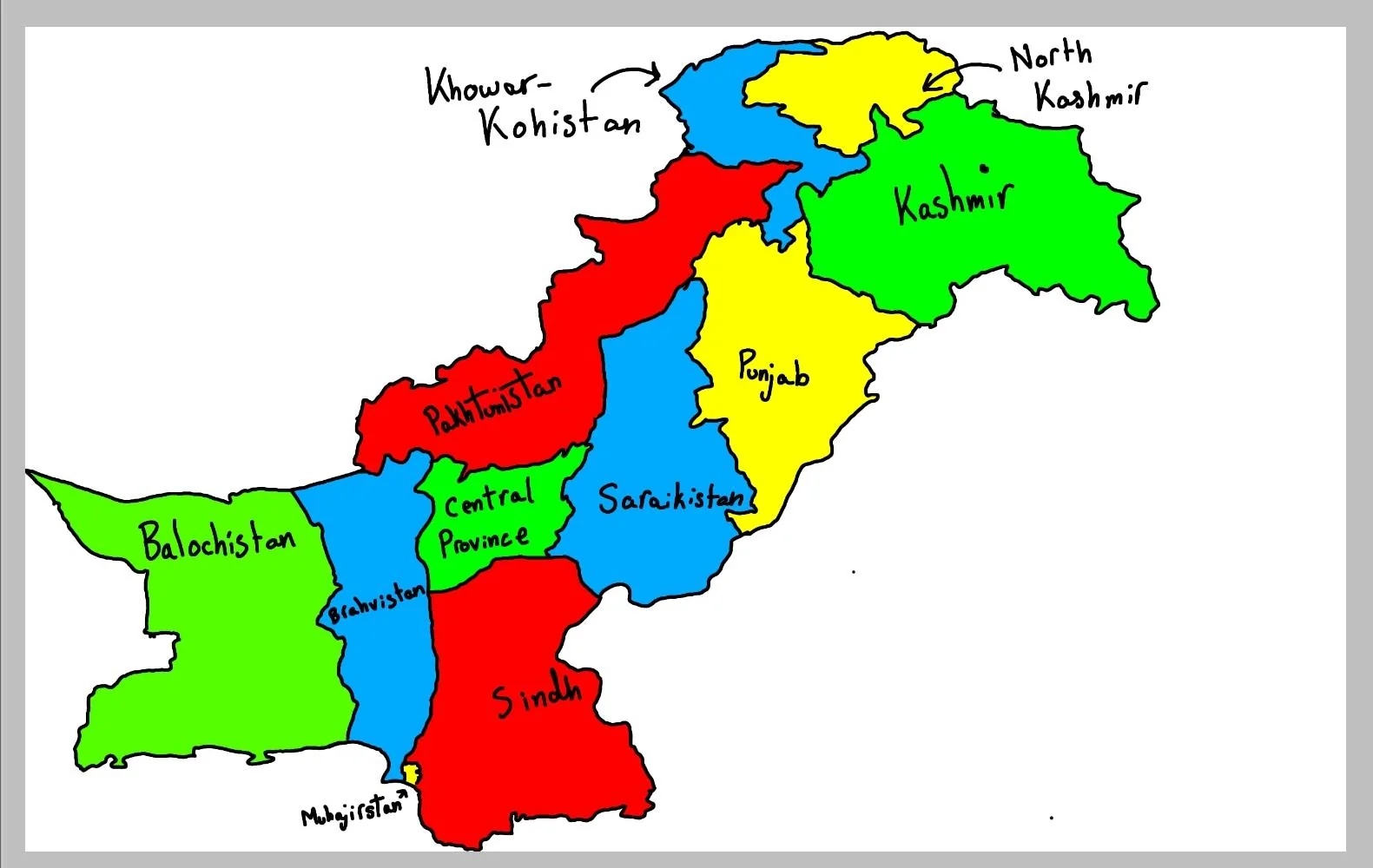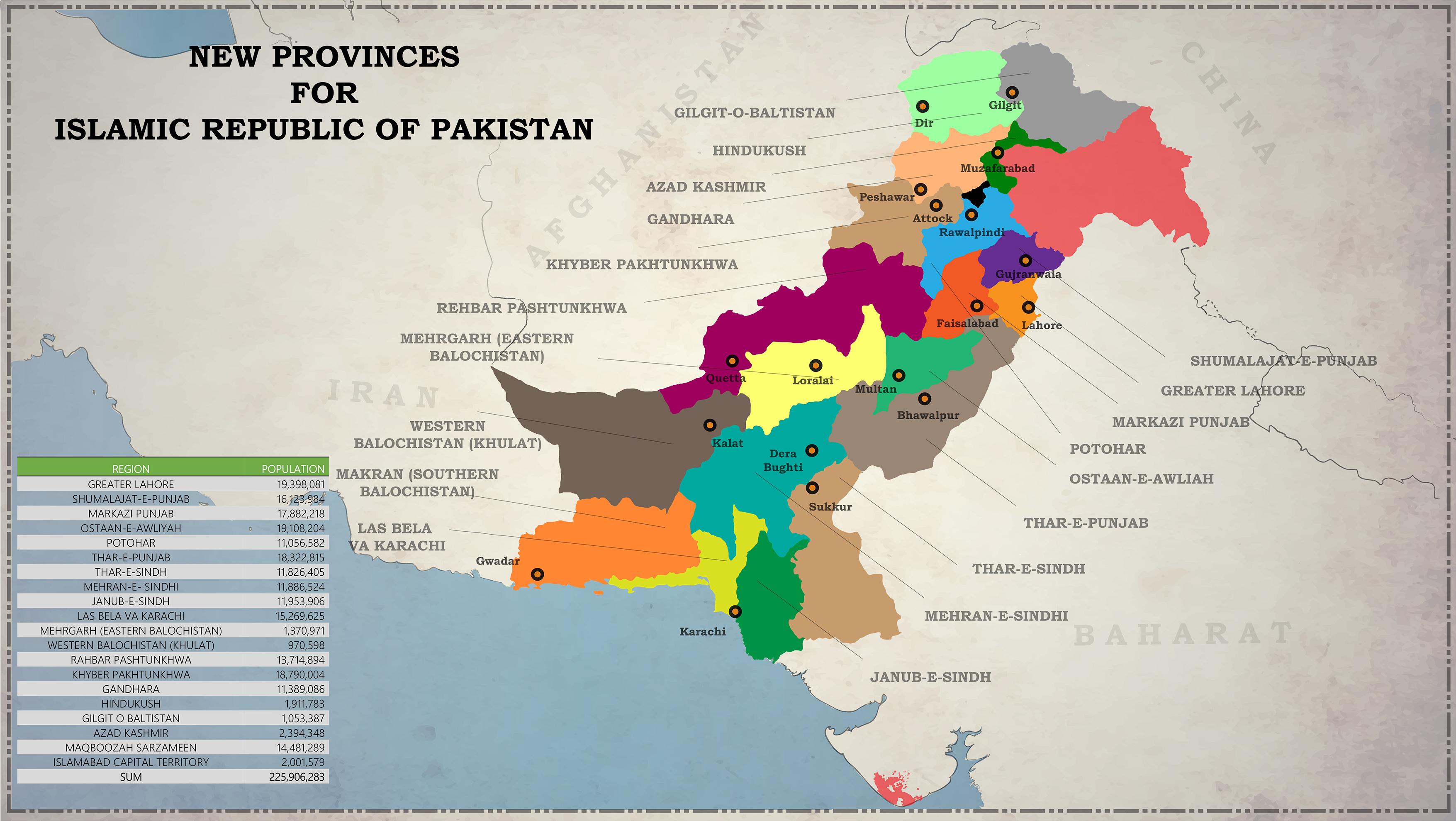Pakistan, a diverse and vibrant country, is divided into several administrative regions known as provinces of Pakistan. These provinces are essential in shaping the country's political, economic, and cultural landscape. They manage local resources, contribute to national growth, and ensure that governance is efficient and accessible. This article provides a comprehensive overview of the 5 provinces of Pakistan, their significance, and the biggest province of Pakistan.
How Many Provinces Does Pakistan Have?
Pakistan is divided into 5 provinces, each with its unique features and contributions to the country’s overall development. These provinces are:
-
Punjab
-
Sindh
-
Khyber Pakhtunkhwa (KP)
-
Balochistan
-
Azad Jammu and Kashmir (AJK)
Each province plays a vital role in the country’s governance, culture, and economy. Let’s explore these provinces in more detail.

Importance of Provinces in Pakistan
The importance of provinces in Pakistan cannot be overstated. Each province is responsible for managing its affairs, addressing regional issues, and contributing to the overall progress of the nation. Here are some reasons why the provinces are critical:
1. Decentralized Governance
Provinces ensure that governance is closer to the people, allowing local issues to be addressed more efficiently. This decentralized system empowers provincial governments to implement policies that are tailored to the needs of their specific regions.
2. Economic Contributions
Each province has its economic strengths, which contribute significantly to Pakistan’s GDP. From agriculture to manufacturing, trade, and natural resources, the provinces are the economic engines of the country.
3. Cultural Diversity
Pakistan is a country of diverse cultures, languages, and traditions. The provinces of Pakistan are home to a wide range of ethnic groups, each contributing to the cultural richness of the nation. This diversity enhances the country’s heritage and promotes unity in diversity.
4. Political Representation
The provinces of Pakistan play a vital role in the country’s political landscape. They have representation in the National Assembly, ensuring that regional voices are heard at the federal level. This fosters a sense of inclusion and strengthens democracy.
5. Natural Resources
The provinces of Pakistan are rich in natural resources, which are essential for the country’s economic development. Balochistan, for instance, is home to vast mineral resources, while Sindh and Punjab are key players in agriculture.
The Biggest Province of Pakistan
When discussing the biggest province of Pakistan, it’s essential to understand that the term "biggest" can refer to both land area and population.
Largest Province by Area: Balochistan
Balochistan is the largest province of Pakistan by land area, covering approximately 347,190 square kilometers. It accounts for nearly half of the country’s total land area, making it a significant geographical entity. Despite its vast size, Balochistan has a relatively small population compared to other provinces, contributing to its underdevelopment in terms of infrastructure and services. However, Balochistan is rich in natural resources, including oil, gas, and minerals, which make it a key player in Pakistan’s economic future.
The largest province of Pakistan by Population: Punjab
Punjab is the most populous province in Pakistan, with over 110 million people. It is the economic heart of Pakistan, contributing significantly to the country’s agricultural and industrial output. The province is known for its fertile soil and extensive agricultural lands, making it a key player in the production of wheat, rice, and cotton. Punjab’s industrial sector is also robust, with Lahore being a major hub for manufacturing, textiles, and trade.
A Detailed Overview of the 5 Provinces of Pakistan
Let’s take a deeper dive into each of the 5 provinces of Pakistan and their unique characteristics:
1. Punjab: The Economic Powerhouse
Punjab is the largest province of Pakistan by population and a crucial contributor to the nation’s economy. The province is known for its agricultural productivity, industrial growth, and vibrant cultural heritage.
-
Key Industries: Agriculture (wheat, rice, cotton), textiles, manufacturing, and services.
-
Major Cities: Lahore (the cultural and economic hub), Faisalabad, Rawalpindi, Multan.
-
Cultural Significance: Punjab has a rich cultural heritage, with a deep-rooted history in classical music, poetry, and dance. It is also home to several important religious and historical sites, including the Badshahi Mosque and the Lahore Fort.
2. Sindh: The Economic Gateway
Sindh is a major economic hub of Pakistan, largely due to the presence of Karachi, the country’s financial capital. Sindh’s strategic location along the Arabian Sea makes it an essential player in Pakistan’s trade and commerce.
-
Key Industries: Textiles, petroleum, chemicals, cement, and trade.
-
Major Cities: Karachi, Hyderabad, Sukkur.
-
Cultural Heritage: Sindh has a rich history, with the ancient Indus Valley Civilization being one of the earliest centers of human development. The province is also known for its Sufi traditions, including the famous shrine of Shah Abdul Latif Bhittai.
3. Khyber Pakhtunkhwa (KP): The Frontier Province
Khyber Pakhtunkhwa (KP) is located in the northwestern part of Pakistan and shares a border with Afghanistan. The province is known for its mountainous terrain, natural beauty, and strategic importance.
-
Key Industries: Agriculture (fruits, vegetables), mining, tourism, and manufacturing.
-
Major Cities: Peshawar (the provincial capital), Mardan, Abbottabad, Swat.
-
Cultural Heritage: KP is home to the Pashtun people, known for their hospitality, traditions, and rich cultural history. The region is also known for its beautiful valleys, such as Swat and Kaghan.
4. Balochistan: The Resource-Rich Province
Balochistan is the largest province of Pakistan by land area and is rich in natural resources, including minerals, oil, and gas. Despite its vast size, Balochistan remains underdeveloped, with limited infrastructure and social services.
-
Key Industries: Mining, oil and gas, agriculture, fishing, and trade.
-
Major Cities: Quetta (the provincial capital), Gwadar, Turbat, Ziarat.
-
Strategic Importance: Balochistan is home to the Gwadar Port, a deep-water seaport that is a key part of the China-Pakistan Economic Corridor (CPEC). The port’s strategic location makes it vital for trade and regional connectivity.

5. Azad Jammu and Kashmir (AJK): A Region of Beauty and Political Importance
Azad Jammu and Kashmir (AJK) is an autonomous region in northern Pakistan that holds significant political and cultural importance. The region is known for its breathtaking landscapes, including lush valleys, rivers, and mountains.
-
Key Industries: Agriculture, tourism, hydropower.
-
Major Cities: Muzaffarabad, Mirpur, Rawalakot.
-
Political Importance: AJK plays a crucial role in Pakistan’s stance on the Kashmir issue and has a strong cultural and historical connection to the Jammu and Kashmir region.
Table: Key Features of the Provinces of Pakistan
|
Province |
Area |
Population |
Key Industries |
Major Cities |
|
Punjab |
205,344 km² |
110 million |
Agriculture, textiles, manufacturing, services |
Lahore, Faisalabad, Rawalpindi |
|
Sindh |
140,914 km² |
47 million |
Textiles, petroleum, chemicals, cement |
Karachi, Hyderabad, Sukkur |
|
Khyber Pakhtunkhwa |
101,741 km² |
35 million |
Agriculture, mining, tourism |
Peshawar, Mardan, Abbottabad |
|
Balochistan |
347,190 km² |
12 million |
Mining, oil & gas, agriculture, fishing |
Quetta, Gwadar, Turbat |
|
Azad Jammu & Kashmir |
13,297 km² |
4.5 million |
Agriculture, tourism, hydropower |
Muzaffarabad, Mirpur, Rawalakot |
FAQs on Provinces of Pakistan
1. How many provinces does Pakistan have?
Pakistan has 5 provinces: Punjab, Sindh, Khyber Pakhtunkhwa (KP), Balochistan, and Azad Jammu and Kashmir (AJK).
2. What is the largest province of Pakistan by area?
Balochistan is the largest province of Pakistan by land area, covering approximately 347,190 square kilometers.
3. Which province is the most populous in Pakistan?
Punjab is the most populous province in Pakistan, with over 110 million people.
4. What are the name of provinces of Pakistan?
The name of provinces of Pakistan are: Punjab, Sindh, Khyber Pakhtunkhwa, Balochistan, and Azad Jammu & Kashmir.
5. What makes Khyber Pakhtunkhwa significant?
Khyber Pakhtunkhwa (KP) is significant due to its strategic location along the Afghanistan border, its rich cultural heritage, and its growing economy, particularly in agriculture and mining.
6. What is the economic role of Sindh?
Sindh is vital to Pakistan’s economy, with Karachi being the country’s financial capital. The province is known for its industries, including textiles, petroleum, and chemicals.





.gif)















Sign in
to continue to ilmkidunya.com